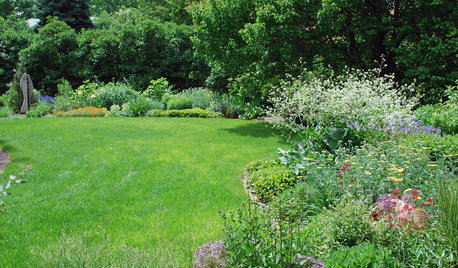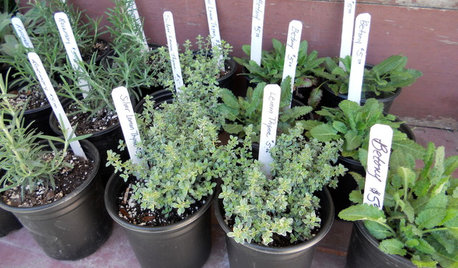Joining the RMV club
lucretia1
14 years ago
Related Stories

REMODELING GUIDESTongue and Groove Wall Paneling Joins the Comeback Club
Try this smooth architectural move to give your walls a streamlined appearance that conveys quality
Full Story
LIFESimple Pleasures: Get a Book Club Going
Kick back with friends and a thought-provoking read for an event that’s entertaining and educational all at once
Full Story
DECORATING GUIDESSo Your Style Is: Preppy
Tennis anyone? Even if you've never picked up a racquet, you can join the All-American prep club with these style secrets
Full Story
GARDENING GUIDESRocky Mountain Gardener: What to Do in June
Join the edible-garden club, deadhead spring-blooming plants around the landscape and make sure to fit in an inspiring garden tour
Full Story
NORTHEAST GARDENINGNortheast Gardener's January Checklist
Feed the bees, support local garden clubs and have fun with natives to get your garden looking its best in 2013
Full Story
FARMHOUSESWorld of Design: See How 9 Families Live and Farm on Their Land
Join us as we visit the homes and farms of passionate food producers and hear about rural life around the globe
Full Story
ECLECTIC HOMESHouzz Tour: A Manor Near D.C. Goes From Suburban Modern to Georgian
Newly enclosed spaces and traditional details join eye-popping murals to give a 2002 home some European gravitas
Full Story
HOME TECHThe Inevitable Future of Drones Around Your Home
As Google joins the push for airborne deliveries, it seems only a matter of time before neighborhoods are buzzing with drones. Is that OK?
Full Story
HOUZZ TOURSMy Houzz: Coastal Elegance for a 1917 Bungalow
Sea glass and beachy colors join the family silver and traditional seating in a 4-bedroom Florida home
Full Story
PETS15 Doggone-Good Tips for a Pet Washing Station
Turn a dreaded chore into an easier task with a handheld sprayer, an elevated sink or even a dedicated doggie tub
Full StorySponsored
Columbus Area's Luxury Design Build Firm | 17x Best of Houzz Winner!





malcolm_manners
paparoseman
Related Discussions
Forced to join a club I don't want to belong to!
Q
Joining the "Can't Decide on a Backsplash" club!
Q
Hey Mamapinky, i have joined to club
Q
Hey MamaPinky--I've joined your club, too!
Q
lucretia1Original Author
cemeteryrose
lucretia1Original Author
senko
henry_kuska
malcolm_manners
taoseeker
henry_kuska
taoseeker
jerijen
henry_kuska
jerijen
lucretia1Original Author
jerijen
henry_kuska
malcolm_manners
henry_kuska
malcolm_manners
Embothrium
henry_kuska
henry_kuska
malcolm_manners
hoovb zone 9 sunset 23
henry_kuska
malcolm_manners
henry_kuska
henry_kuska
henry_kuska
taoseeker
malcolm_manners
henry_kuska
henry_kuska
sandy808
taoseeker
lucretia1Original Author
henry_kuska
malcolm_manners
taoseeker
malcolm_manners
henry_kuska
henry_kuska
henry_kuska
henry_kuska